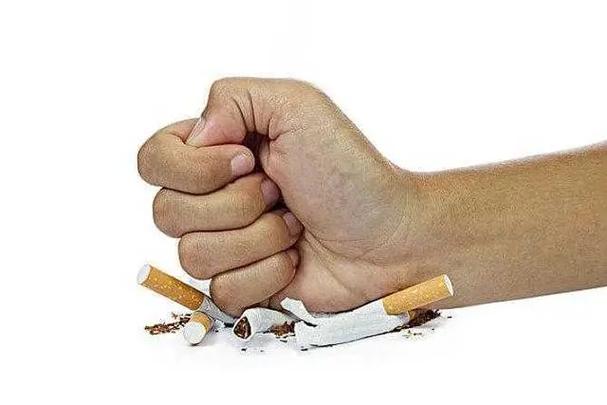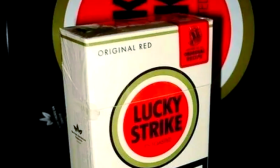Title: The Unseen Intruder: How Secondhand Smoke Infiltrates Art Studios and Harms Visitors
Art studios are often envisioned as sanctuaries of creativity—spaces where inspiration flows freely, and the air is thick with the scent of paint, clay, and possibility. Yet, an invisible and dangerous intruder can compromise these havens: secondhand smoke. While the health risks of secondhand smoke in homes, restaurants, and public spaces are well-documented, its impact on art studio environments remains under-discussed. Visitors to art studios—whether students, patrons, or casual observers—may unknowingly face significant health risks due to exposure to tobacco smoke residues and airborne toxins. This article explores the mechanisms of harm, the unique vulnerabilities of art studio settings, and the urgent need for policies to protect visitors.
The Chemistry of Secondhand Smoke in Creative Spaces
Secondhand smoke (SHS) is a complex mixture of over 7,000 chemicals, hundreds of which are toxic, and about 70 can cause cancer. It comprises both mainstream smoke (exhaled by smokers) and sidestream smoke (emitted from burning tobacco). In an art studio, these particles don’t simply dissipate; they settle on surfaces, blend with dust, and adsorb onto materials such as canvases, sculptures, textiles, and even ventilation systems. What makes art studios particularly susceptible is the presence of absorbent materials like paper, untreated wood, and fabrics, which can act as reservoirs for toxic residues. Chemicals like nicotine, formaldehyde, and polycyclic aromatic hydrocarbons (PAHs) cling to these surfaces, re-entering the air through processes like off-gassing or disturbance during activities like sketching, cleaning, or moving artworks.
Moreover, many art studios lack advanced ventilation systems designed to handle airborne pollutants. While some may have windows or basic fans, these are often inadequate to remove fine particulate matter (PM2.5) or gaseous toxins effectively. The combination of poor ventilation and absorbent surfaces creates a lingering hazard, meaning that even if smoking occurs hours before visitors arrive, the air and surfaces may still be contaminated.
Health Risks for Art Studio Visitors
Art studio visitors include diverse groups: students attending classes, families with children, elderly patrons, and individuals with pre-existing health conditions. For these populations, exposure to SHS can have immediate and long-term consequences.
Immediate Effects: Short-term exposure can irritate the eyes, nose, and throat—symptoms that might be mistaken for allergies or reactions to art materials. Headaches, dizziness, and nausea are also common, potentially ruining the creative experience and discouraging return visits. For asthmatics, SHS can trigger severe attacks, requiring emergency intervention.
Long-Term Consequences: Repeated visits to a smoke-polluted studio increase the risk of chronic health issues. Cardiovascular damage, respiratory infections, and accelerated lung function decline are all associated with chronic SHS exposure. Most alarmingly, the carcinogens in SHS elevate the risk of lung cancer, stroke, and even breast cancer. Children are especially vulnerable; their developing bodies and higher respiratory rates make them more susceptible to toxins, potentially leading to asthma, ear infections, and developmental issues.
Art Studios as Uniquely Vulnerable Environments
Unlike offices or retail spaces, art studios often involve close physical interaction with materials. Visitors lean over canvases, handle clay, or rearrange exhibits, inadvertently touching contaminated surfaces. Dry mediums like pastels or charcoal can mix with toxic dust, becoming vectors for exposure through skin contact or inhalation. Similarly, wet techniques like painting or printmaking might aerosolize settled residues when water or solvents are used nearby.
Another concern is the psychological and aesthetic impact. The smell of smoke can cling to artworks, altering how they are perceived and potentially reducing their value. For artists and curators, this poses a professional risk: galleries or collectors may reject pieces that carry the odor of tobacco. Furthermore, the presence of SHS contradicts the wellness-focused ethos that many creative spaces strive to promote.
Case Study: The Hidden Threat in Community Studios
Consider a typical community art studio offering weekend workshops. A smoking instructor or resident artist might step outside for a cigarette break but return with smoke residues on their clothes and hands. This thirdhand smoke—the residual contamination left on surfaces—then transfers to shared tools, chairs, or door handles. Visitors, unaware of the danger, may absorb toxins through their skin or ingest them while eating snacks during breaks. In one documented incident at a small studio in Europe, several visitors reported persistent headaches and respiratory irritation after sessions. Testing revealed high levels of nicotine on drafting tables and in the dust, traced back to a volunteer who smoked during off-hours.
Solutions and Protective Measures
Eliminating SHS in art studios requires a multi-faceted approach:

Strict Smoke-Free Policies: Studios should implement and enforce comprehensive smoke-free policies that prohibit smoking anywhere on the premises, including outdoor areas near entrances or ventilation intakes. Signage should clearly communicate these rules to all staff and visitors.
Improved Ventilation and Air Purification: Investing in HEPA air purifiers can capture fine particles, while activated carbon filters help adsorb gaseous toxins. HVAC systems should be regularly maintained and upgraded where possible to ensure adequate air exchange rates.
Education and Awareness: Studio managers should educate residents and visitors about the risks of SHS and thirdhand smoke. Workshops on studio safety could include modules on air quality, emphasizing that smoke residues are incompatible with a healthy creative environment.
Regular Cleaning Protocols: Using vacuum cleaners with HEPA filters and washing surfaces with appropriate cleaners can reduce residue buildup. Materials that are difficult to clean (e.g., porous canvases) should be stored away from high-traffic or potentially contaminated areas.
Designated Smoking Areas: If absolutely necessary, designated smoking areas should be located far from the studio, with clear guidelines that smokers change clothing or wash hands before re-entering.
Conclusion
Art studios must be safe environments that nurture creativity and well-being. The intrusion of secondhand smoke undermines this purpose, posing tangible health risks to visitors through both airborne exposure and contact with contaminated surfaces. By recognizing the unique vulnerabilities of these spaces and adopting proactive measures, studio operators can protect their visitors, preserve the integrity of artworks, and uphold their commitment to fostering inspiration without compromise. The art world, built on expression and innovation, should lead by example in ensuring that the air within its spaces is as pure as the creativity it inspires.










